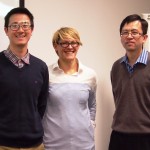 By Jie (Jack) Yang
By Jie (Jack) Yang
I am currently undertaking a study which uses an innovative cloud-computing tool – developed here at SMART Infrastructure Facility – to collect, analyse, and visualise data from different social media networks in Australia, China and Korea. Specifically, it aims to investigate how different countries are using social media platforms respectively to contribute to topical conversations on culture and politics. By gathering, sorting, and displaying information from millions of data records on various topics such as films and TV dramas, this project will increase public awareness among three different countries. Continue reading →








